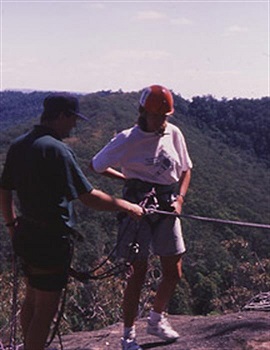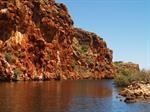
Adventure Tourism can cover a wide range of experiences from walking through a National Park to Cage Diving with Great White Sharks.
Adventure Tourism usually occurs in remote or exotic locations, so if you are wanting a break from the normal and to see some of the less-traveled parts of the world, this course might be just for you.
Course Content and Structure
There are 8 lessons in this course:
- Scope and nature of Adventure tourism: Introduction to adventure tourism, historical themes, women travelers, experiences, motivating factors for adventure tourism, adventure activities, limitations and risks, artificial environment and non-physical adventure tourism.
- The Product: Sources and Types: Types of adventure tourism, types of adventure locations, case studies in New Zealand, India, Iceland, Brazil and Africa, sources of information.
- Management: Management process, issues, staff training, transport, equipment suppliers, media, volunteer organisations, marketing, marketing tools, seasonal fluctuations.
- The Customer: Adventure tourism customers, market sector, tourist motivation, conservation tourism, adventure tourist behavior, soft and hard adventurers, risk taking, ecotourism and customer expectations
- Locations & Facilities - Artificial environments: types of artificial environment tourism, artificial adventure environment, advancement in adventure developments, examples, advantages and disadvantages, and classification of artificial adventure.
- Locations & Facilities - Natural: natural environments, adventure tourism in natural environments, wildlife tourism, case study - Antarctica, ecotourism, benefits of nature-based tourism, nature-based ecotourism, locations and destinations, health benefits of nature, advantages and disadvantages of nature-based tourism.
- Ethics, Sustainability and Environmental impacts: Introduction, social impacts, cultural impacts, environmental impacts and economic impacts.
- Risk management & Insurance: some categories of risk, risk management strategies and plans, assessing the risk, the risk management plan, consequences of an event happening, crisis management and insurance.
Each lesson culminates in an assignment which is submitted to the school, marked by the school's tutors and returned to you with any relevant suggestions, comments, and if necessary, extra reading.
Aims

- Define the nature and scope of adventure tourism
- Identify types of adventure tours, and sources of information on them.
- Consider the requirements of managing an adventure tourism destination or service.
- Identify potential customers, customer needs and requirements in planning and conducting adventure tours.
- Identify various kinds of artificial environments for adventure tours, and the facilities typically provided at them.
- Discuss the requirements and problems associated with using natural locations for adventure tours.
- Identify ethical and environmental issues related to adventure tourism.
- Identify kinds of risk and strategies for reducing their negative impacts on customers and operators.
What You Will Do
- Define Adventure Tourism in your own words.
- List target groups for marketing adventure tourism.
- What type of adventure tourism do you consider to have the greatest potential for financial success in your region.
- Summarize brochures on 5 different adventure tourism attractions, services or tours.
- Submit a list of Adventure Tourism attractions
- Analyse the potential of adventure tourism in the region in which you live.
- Compare the attractions and disadvantages of three different locations or destinations in adventure tourism.
- How does Adventure Tourism differ to other types of Tourism?
- How does the media influence Adventure Tourism in your Country?
- Explain licensing requirements for three different types of adventure tourism activities in your country.
- Describe ways in which the adventure tourism market might be segmented.
- How are consumer trends changing in adventure tourism?
- Explain the difference between soft and hard adventurers.
- Based on your research, discuss the relationship between adventure and risk.
- What kinds of people are most likely to go on adventure tours?
- Differentiate between artificial and natural adventure tourism destinations.
- List as many types of different artificial tourism attractions as you can conceive of (they do not have to exist), and indicate beside each what you believe is its likely target market.
- Arrange a list above into soft & hard destinations.
- Report on the environment, facilities and services at the two different adventure tourism destinations. in two columns: one column hard & one soft
- List different types of natural adventure tourism activities
- What areas of natural adventure tourism have experienced growth in recent years?
- What issues should management consider when planning to use natural adventure tourism destinations?
 The Scope is Unlimited
The Scope is Unlimited
The scope of adventure tourism is only limited by imagination and money. New ideas are being developed continually, taking root in one part of the world, and then, if successful, being copied across the globe.
Many artificial environments are either re-creations or inspired ideas which have grown from real life "adventure" destinations. The advantage of an artificial river, reef or mountain as an adventure tourism destination is simple. It can be located close to already established tourism facilities (eg. accommodation, transport, food service, entertainment), and in a place which is already visited by a large clientele. Another advantage is environmental protection. An activity that would otherwise affect environments that are fragile or protected can now be done in a man made situation, avoiding the negative impact on the natural environment.
One distinct advantage of this type of destination is that groups, families or couples can be attracted more easily. Often one person will seek an adventure experience while their friends or family seek something different. It only stands to reason that the destination which offers more will be likely to attract more.
Artificial Adventure Environments
Indoor climbing walls are the best-known artificial adventure environment. They have many advantages over real outdoor cliffs and mountains: participants are able to learn and practise climbing skills in a relatively safe environment, year-round, without the vagaries of weather, and without having to spend large amounts of money on travel, specialist clothing and expensive equipment.
Other artificial adventure environments owe their popularity to similar reasons: they are conveniently located to urban centres, they are safe, fun and affordable, and they are especially accessible for younger people who might not have the means to otherwise participate in the 'real' thing. In today's time-poor society, artificial environments provide 'instant adventure'.